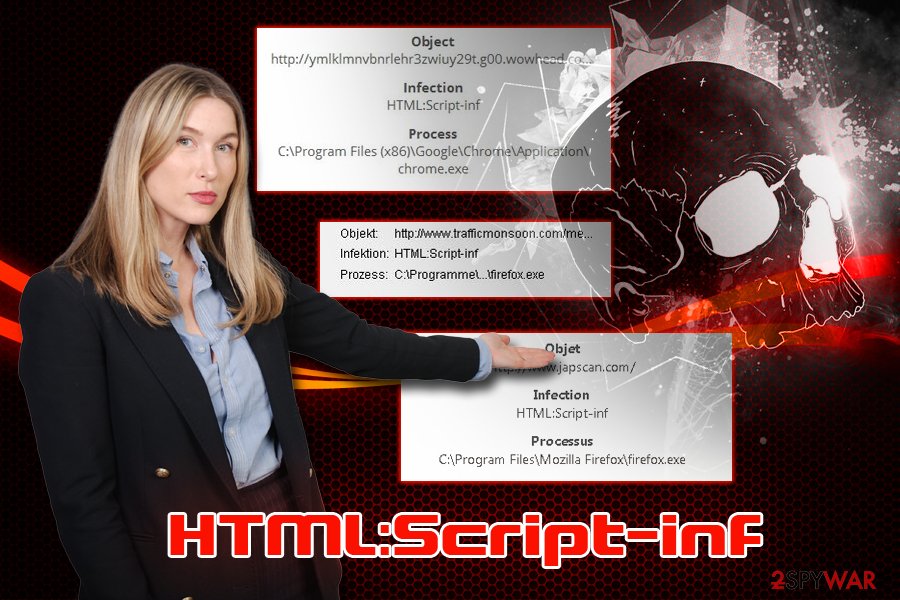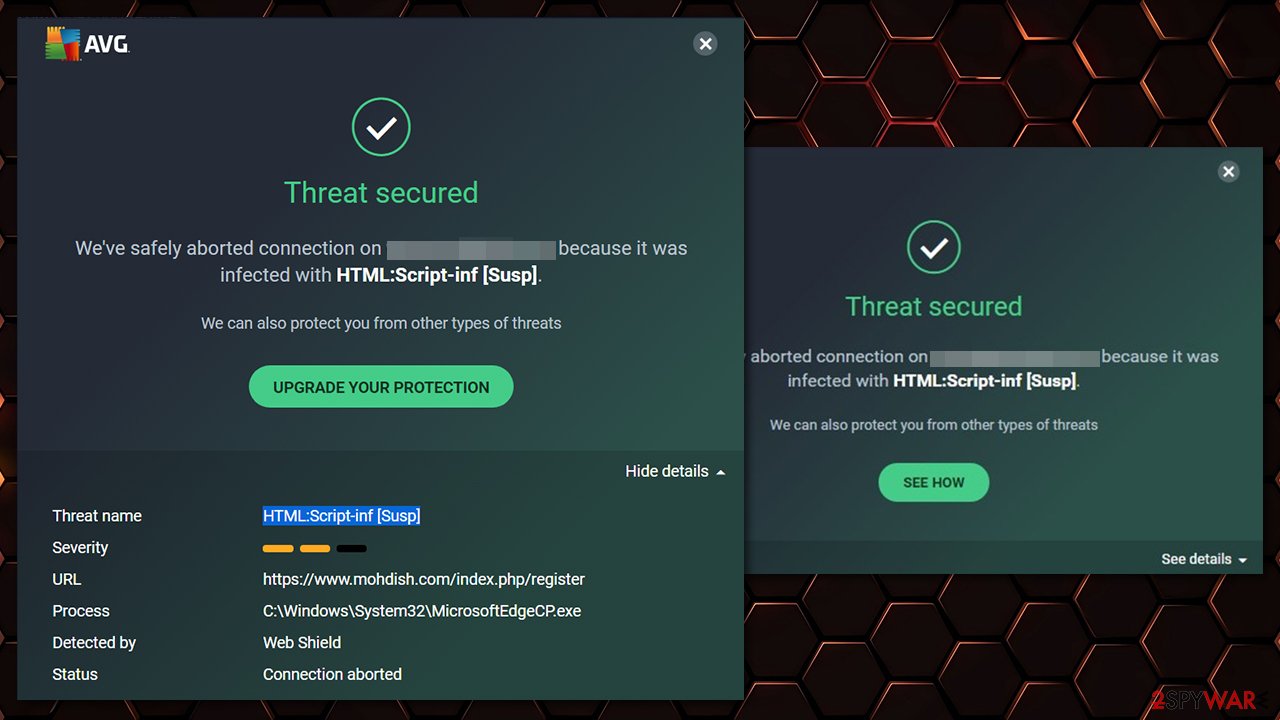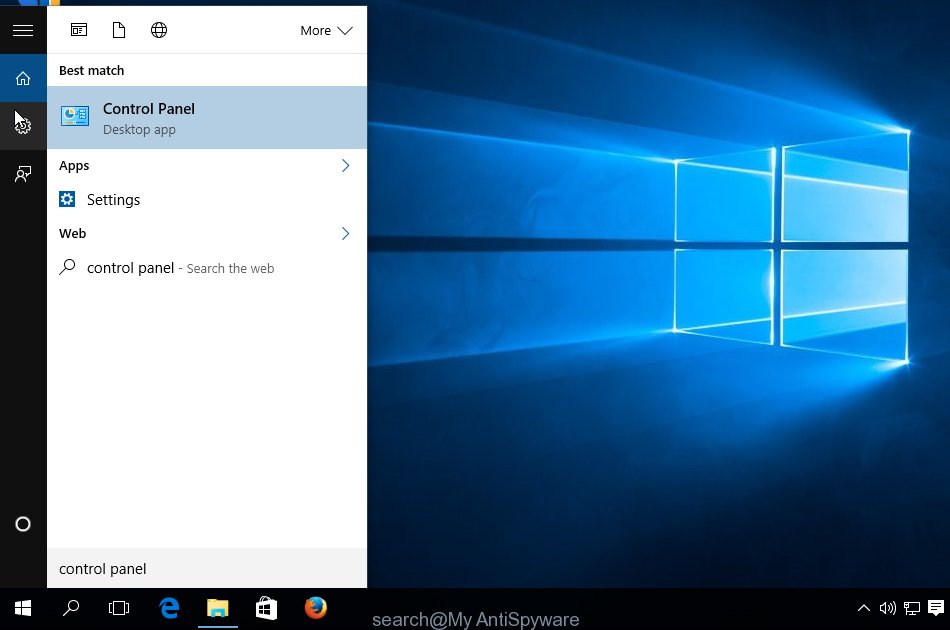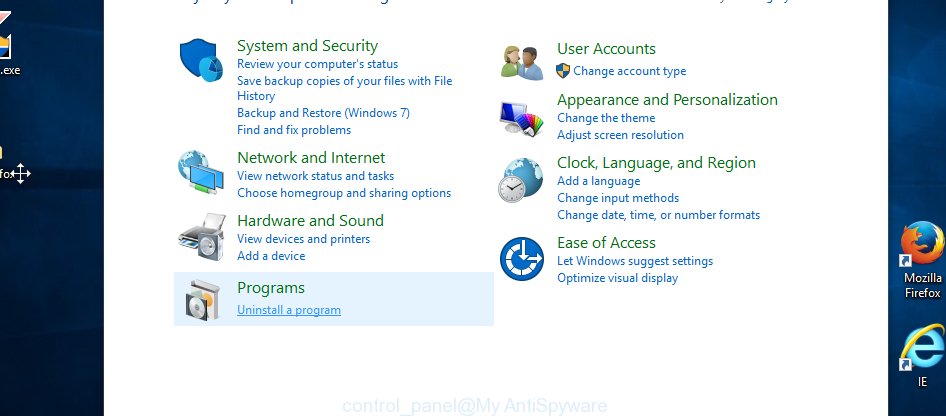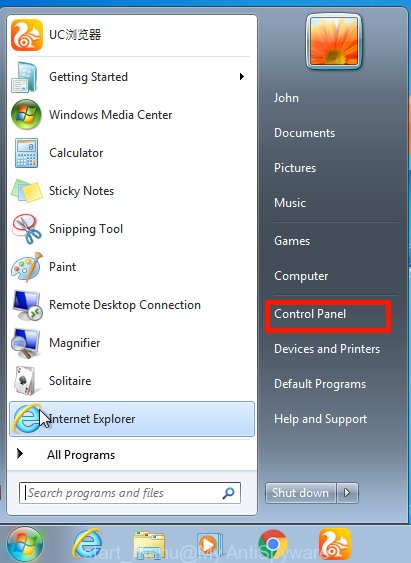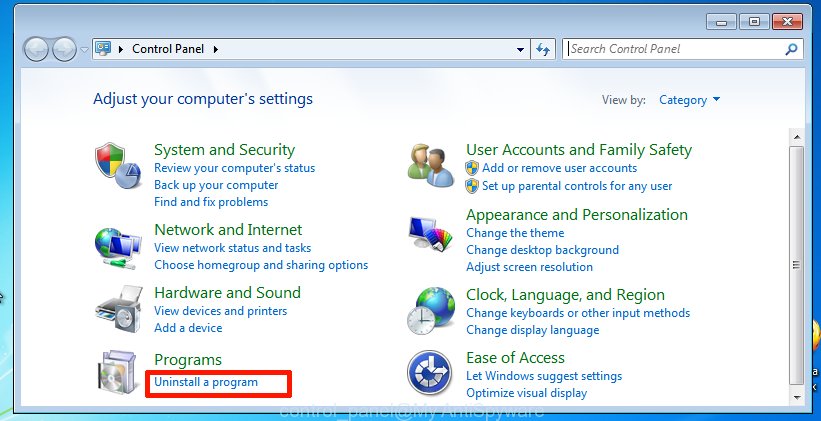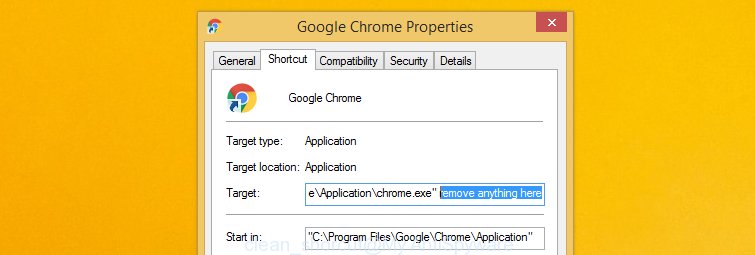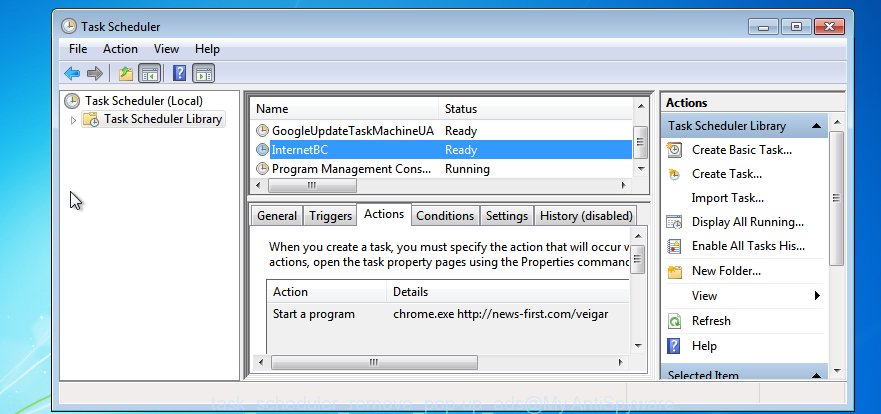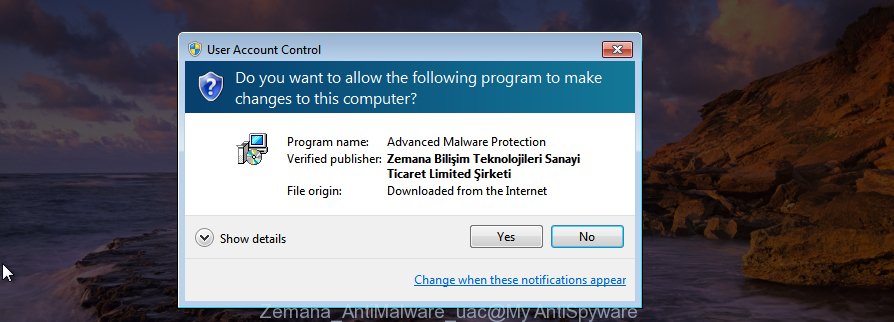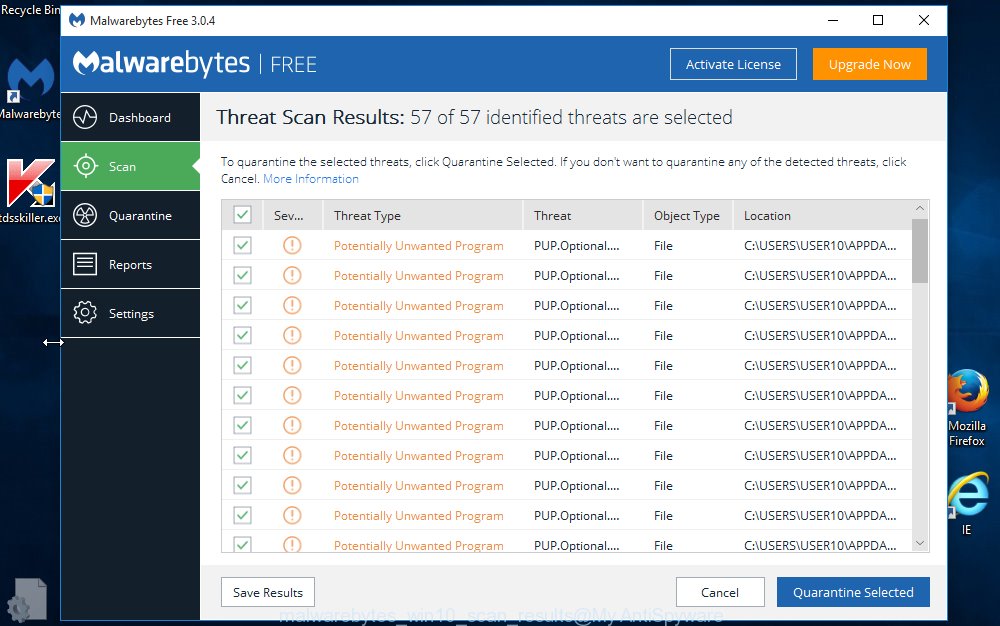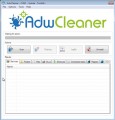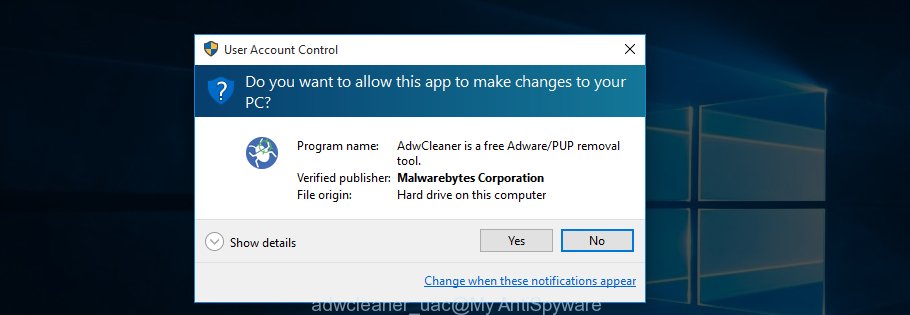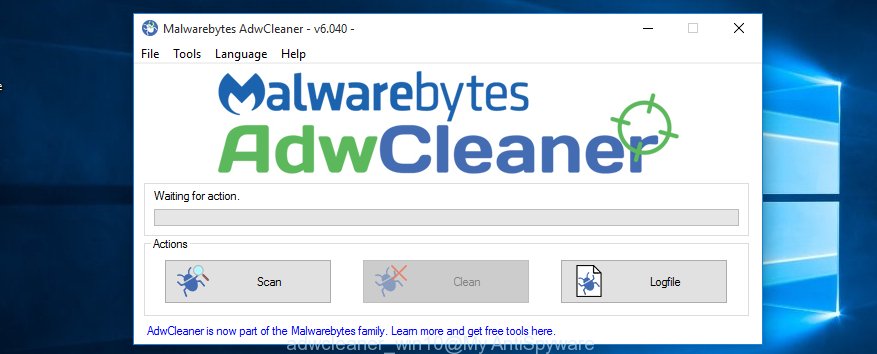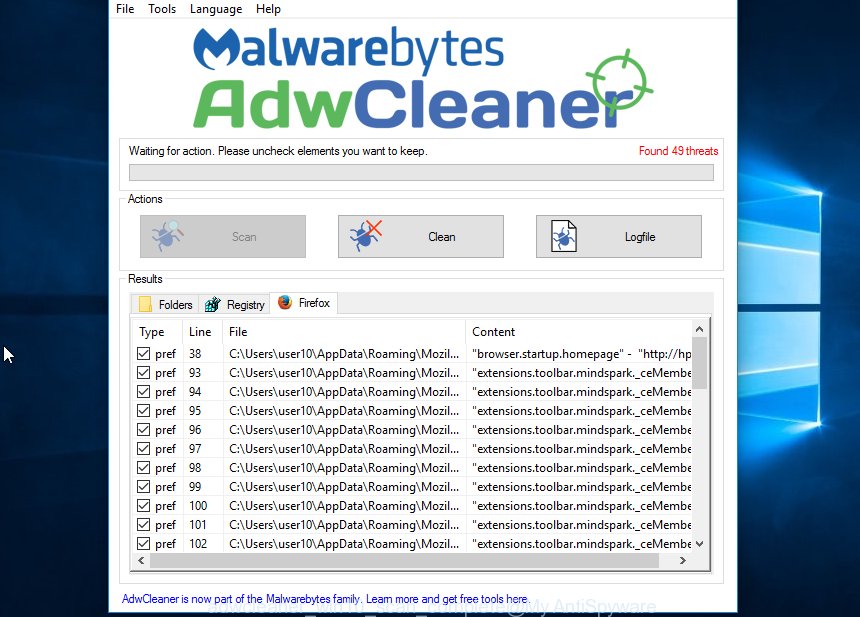Что такое script inf
HTML:Script-inf Removal Guide
What is HTML:Script-inf?
HTML:Script-inf is a script that is hosted on the malicious sites to propagate malware
A name used by multiple AV engines to describe a malicious script loaded onto a compromised website
HTML:Script-inf is a generic detection used by multiple AV engines to describe a malicious script that is embedded into websites. Virus authors might hack these sites or specially craft them for malicious purposes. Thus, under certain conditions, if users visit such a compromised domain, they might unintentionally and without any warning install malware on their device.
Virus can be related to a variety of activities, including data theft, keylogging, data-locking, etc. – its capabilities depend on what type of malware hackers host. Generally, such detection by anti-virus software does not mean that the visitor is infected; however, those who do not employ security measures might get infected with a nasty cyberthreat.
In some cases, the detection name might also represent a false positive – so that is something that should be investigated before files are quarantined or deleted from the computer. Additionally, some users claimed that their antivirus software does not stop showing popups on a regular basis without them visiting any websites. This behavior is typically web browser exclusive (for example, it only occurs when Google Chrome is used), which indicates that browser settings have been compromised and need to be reset.
| Name | HTML:Script-inf |
| Type | Malware (malicious script) |
| Infection conditions | Drive-by-download onto compromised machines |
| Possible symptoms of infection | Error messages, computer slowdowns, redirects to suspicious sites, etc. |
| Affected browsers | Google Chrome, Internet Explorer, Mozilla Firefox, Safari, etc. |
| Elimination | Scan your PC with anti-virus software |
| Recovery | To fully recover from the infection, use Reimage Intego |
HTML:Script-inf is basically a part of a drive-by-download or drive-by-install technique used by cybercriminals to install malware on users machines. For this scheme to work, certain conditions must be met, including:
Once those two conditions are met, a virus is downloaded and populated on the user’s computer. The only way to remove malware is by using sophisticated anti-virus scanners. Note that some infections, like adware or browser hijackers, can be terminated without security software. However, drive-by-download technique is used to install much more severe threats on devices.
Some users complained that their antivirus is constantly blocking a variety of websites and showing the popup upon entry. This means that the infection is already present on the device, and malware managed to save malicious files on the host machine. In such a case removal should be performed as soon as possible.
HTML:Script-inf is a script designed to automatically install malware on visitors’ devices
Precautionary measures to avoid malware on the internet
Malware usually does not emit any infection symptoms, as hackers want to make sure that the malicious payload can stay on the device as long as possible and execute what it’s been programmed to do. For example, a compromised device might record every keystroke performed by the victim, recording such data as emails, banking details, passwords, etc. Without a doubt, such activity is extremely dangerous for the user.
Due to malware’s stealthy behavior, the threat might be present on the machine for weeks or even months before it is detected. Thus, it is best to avoid cyber infections altogether, and make sure the precautionary measures are used:
Terminate malware with the help of reputable security software
To remove a virus, you will have to use professional security software. There are plenty on the market available, but be aware that detection rate might vary from tool to tool, depending on what type of malware was injected into your device. Thus, a scan of several AV engines might be needed until the threat is detected and eliminated.
In some cases, the virus might interfere with security software and prevent it from working correctly. In such a case, you should enter Safe Mode with Networking and perform a full scan from there.
Popups can show up as soon as you open your Chrome web browser, even without visiting the particular website
If the detection is recurring, you might have to take additional steps to perform a full HTML:Script-inf removal. Here’s what you should try:
Антивирус Avast заблокировал сайт klondike-studio.ru из-за ошибки HTML:Script-inf
Придя утром на работу, первым делом хотел зайти на сайт нашей студии, проверить всё ли работает и полюбоваться на новый дизайн 🙂 Но меня ожидал неприятный сюрприз — антивирус Avast заблокировал сайт из-за подозрения на вредоносный скрипт по причине HTML:Script-inf!
Вчера вечером сайт работал в штатном режиме, не было никаких блокировок. Что же случилось за ночь? Администраторская панель работала и не блокировалась. Это говорило о том, что именно в публичной части антивирусу что-то не нравится. Полез искать решение в интернете и нашел, что в 2011 году был баг, из-за которого Avast все сайты считал вредоносными. Но ту ошибку давно исправили, да и на другие сайты Avast у меня не ругался. Ещё полазив по интернету, понял, что информации про HTML:Script-inf довольно мало, а про решение этой ошибки ещё меньше.
HTML:Script-inf:
Если на сайте находится вредоносный скрипт, он распознаётся и регистрируется как HTML:Script-inf. Инфекция может быть результатом взлома сервера. Закодированный код на веб-сайте может быть детектирован, так как кодировка распознаётся как подозрительный файл.
«Взлом сервера? Очень пугающе» — подумал я и начал искать решение проблемы с удвоенной скоростью 🙂 Но все решения были мягко говоря «так себе». Кто-то советовал исправить права на папки и файлы с 777 на стандартные 755 и 644, кто-то советовал установить непонятные утилиты, которые, скорее всего, сами были напичканы вирусами. В самой свежей теме на официальном форуме советовали обратится в техподдержку антивируса. Вообщем, никакого конкретного решения я не нашел, и пришлось разбираться самому. Первым делом запустил сканирование сайта с помощью утилиты Ai-bolit. Она выручала не раз и хорошо себя зарекомендовала. Пока программа искала подозрительные файлы на сервере, проверил сайт с помощью онлайн-сервисов virustotal.com и drweb.ru. Они ничего не нашли, и тогда я отключил веб-экран антивируса и попытался найти подозрительные скрипты и ссылки «ручками» в исходном коде страницы. Ничего подозрительного я не нашёл, и далее с помощью команды
получил список файлов, которые были созданы или изменены на сервере со вчерашнего дня. В них также не было ничего вредоносного. Тем временем Ai-bolit выдал отчет о найденных ошибках, но, проанализировав список, я не нашёл подозрительного кода. Большинство ошибок было связано с кодированием кода с помощью функций gzuncompress и base64_decode, которые используются в ядре Битрикса. Вообщем, ничего вредоносного найти не удалось, и, тогда, я начал искать ошибку дедовским методом «в лоб»: полностью закомментировал код и начал расскомменчивать его по частям. После нескольких минут поиска было выявлено, что сайт блокируется при подключении плагина подсветки синтаксиса code-prettify:
Ввел этот адрес в строку браузера и получил блокировку от антивируса с ошибкой URL:Mal.
На официальном форуме нашёл следующую информацию:
URL: mal — не вирус! Это сообщение антивируса, что данный веб-адрес (URL) заблокирован, потому что числится в его базе данных как вредоносный (malicious).
Теперь все встало на свои места. Rawgit.соm — это хранилище файлов GitHub и, видимо, Avast нашёл в этом хранилище вирус и пометил URL-сайта как нежелательный. В итоге, я скачал все файлы плагина code-prettify к себе на сервер и теперь они подключаются как локальные скрипты. Также просканировал сайты текущих проектов студии на подключение файлов с rawgit.соm.
В этой статье в домене rawgit.соm буквы «с» и «о» заменены на русские, так как антивирус блокирует страницу, даже находя этот домен в обычном тексте 🙂
UPD: Оказалось, что не у одного меня возникла такая проблема. В официальном GitHab’е плагина уже стоит вопрос об этой ошибке:
Как удалить HTML:Script-inf
Опубликовано в Removal на четверг, 18 мая 2017
HTML:Script-inf просто заразил ваш компьютер и вы хотите удалить его?
Троянские программы являются одной из крупнейших кибер-угроз, как они оба скрытные и вредные. К сожалению, вы пересекались с классический троянский конь. HTML:Script-inf действительно является одним проблемной программы. Этот вредитель поражает ваша как вирусов ПК в полной тишине. Поэтому вам не обращать внимания на тот простой факт, что вы были заражены. Троянец проводит все это время бесчинствует, так что вы можете увидеть, как сложно это. Есть причина, почему эти инфекции крайне ужасной. Вместе с файл-шифрование программ, троянских коней являются двумя наиболее тревожным видов вредоносных программ. Однако вымогатели не собирается тратить время скрывается на вашем компьютере. HTML:Script-inf, с другой стороны, работает главным образом за вашей спиной. Этот скрытый инфекция может причинить вам серьезный вред, если вы медлите слишком долго. Какое решение для этого? Устранить вирус, как только вы столкнетесь с ее нежелательного присутствия на вашем устройстве. Сразу после установки, HTML:Script-inf идет после настройки ПК. Да, по умолчанию, настройки. Ни вашего разрешения, ни ваше согласие, потому что вредоносные программы не работает таким образом. Он делает изменения, чтобы вместо того, чтобы служить цели хакеров. Троянец изменяет ваш системный реестр. Кроме того, он меняет некоторые системные файлы и изменяет другим. Как результат, Вы заметите, что Вы не сможете использовать некоторые программы. Спасибо Троян за это. Вирус эффективно изменяет настроек компьютера по умолчанию и может привести к потере данных. И это еще не все. Вполне возможно, что паразит будет идти тоже через Ваш браузер. Таким образом, весь ваш опыт просмотра может превратиться в кибер-кошмар. Если вирус устанавливает браузер или плагин, он будет захватить Ваш браузер. Вы можете встретить подавляющее куча подшефных, противный, бесполезных всплывающих окон. Что эдак общее в угрозу, которую они представляют для вашей безопасности. Как уже упоминалось, рекламные объявления, размещаемые компанией паразитирует ПК спонсируются. Другими словами, они ненадежны и потенциально повреждены. Даже если они не кажутся опасными, вы должны знать лучше, чем чтобы нажимать на объявления открыта. Если Вы нажмете на неправильное объявление, вы автоматически ухудшит ваше и без того плохие позиции. Есть много других инфекций, онлайн. Чтобы защитить вашу машину от них, вам придется сдерживать себя от нажатия. Игнорировать эти обманчивые рекламы и устранить вирус как можно скорее. Троянов не должно быть терпимо, так что не забывайте этот надоедливый паразит.
Как я могла заразиться?
Спам будет самый распространенный ответ. Вы недавно получили некоторые случайные письмо-вложение или сообщение в папке «входящие»? Тогда весьма вероятно, что как HTML:Script-inf были загружены. Авторизация не была ни в чем не участвовали. Именно поэтому необходимо обратить особое внимание на то, что открыть в будущем. В случае, если вы получите то, что Вы не доверяете, удалите его. Это позволит сэкономить вам достаточно головной боли позже. Кроме того, вы должны знать много паразитов перемещают стержень в комплекте. Они полагаются на ваше нетерпение во время процесса. Честно говоря, не многие пользователи ПК тратят свое время на установку. Чаще, чем не, люди пропускают важные шаги и оставить свои устройства открыты для вредоносных программ. Помните, что там может быть целая куча вирусов, добавленные в, казалось бы, безопасный пакет. Если вы заметили потенциального нарушителя на время, вы поставите под вашей собственной безопасности. Выбрать пользовательские или Расширенный параметр в Мастере установки. Не торопите процесс, потому что вы никогда не знаете, что вы установить таким образом. Ваша осторожность в конечном счете окупится. Будьте осторожны, когда дело доходит до Freeware и Shareware связки и избежать непроверенных связки. Последнее, но не менее, проверить eula или условия. Профилактика гораздо меньше времени, чем иметь дело с вредоносным по.
Почему это опасно?
HTML:Script-inf выходит из-под контроля очень быстро. Не только вирус возиться с настройками ПК, но он может также взять с собой рекламные объявления. Эта программа может начать перенаправить вас на неизвестных, вредоносных веб-сайтов тоже. Что много хуже то, что HTML:Script-inf шпионов на вашей личной информации. Вредонос собирает просматривая данные, которые он отправляет в руки хакеров. Никто не мог чувствовать себя в безопасности, зная, что их данные будут украдены мошенниками. Кроме того, инфекция может попасть в некоторые конфиденциальные, личные данные, а также. Это может привести в финансовых махинациях или даже кражи личных данных. В довершение ко всему, HTML:Script-inf может предоставить ее разработчикам удаленный контроль над вашим собственным компьютером. Делать правильные вещи и удалить этот кусок вредоносных программ сразу. Вы найдете руководство наши детальные инструкции по удалению ниже.
Ручное удаление инструкции HTML:Script-inf
Шаг 1: Запустите компьютер в безопасном режиме с поддержкой сети в Windows 8
Шаг 2: Запустите компьютер в безопасном режиме с загрузкой сетевых драйверов в Windows 7/ХР/Vista
Шаг 3: найдите папку автозагрузки
В зависимости от вашей операционной системы (x86 или x64) перейти к:
[Раздел реестра hkey_current_userпрограммное обеспечениеМайкрософтWindowsраздел CurrentVersionвыполнить] или
[Раздел HKEY_LOCAL_MACHINEпрограммное обеспечениеМайкрософтWindowsраздел CurrentVersionвыполнить] или
[Раздел HKEY_LOCAL_MACHINEпрограммное обеспечениеWow6432NodeМайкрософтWindowsраздел CurrentVersionвыполнить]
где %местных папка appdata% относится к:
Дважды проверьте с любой программой защиты от вредоносных программ на любые объедки. Держите ваше программное обеспечение на сегодняшний день.
HTML:Script-inf virus – How to remove (Chrome, Firefox, IE, Edge)
The HTML:Script-inf alerts that shows your antivirus should not be underestimated, because the reason for their appearance is penetration an adware (also known as ‘ad-supported’ software) into your system. It can bring a security risk to your machine. So, do not ignore it! The HTML:Script-inf adware is created to display intrusive and unwanted ads, even without your permission and desire to see it. The annoying advertisements can be just the beginning, because your PC is hijacked by dangerous software, so the amount of popup ads in the future may increase. Its appearance will prevent you normally browse the sites, and more, can lead to crash the web browser.
While your machine is infected with the HTML:Script-inf virus, the Chrome, Firefox, Internet Explorer and MS Edge may be rerouted to unwanted web pages. Of course, the adware may not cause damages to your files or Windows system, but it may display lots of unwanted ads. These ads will be injected within the content of web-sites that are you opening in your browser and can be varied: pop-up ads, in-text ads, different sized banners, offers to install an questionable software. The ads will appear on all web sites, including web-sites where previously you have never seen any ads.
The malicious applications from the ad-supported software family that alters the settings of browsers usually affects only the Chrome, Firefox, Edge and Microsoft Internet Explorer. However, possible situations, when any other web browsers will be affected too. The adware may change the Target property of a web browser’s shortcut, so every time you start the internet browser, instead of your homepage, you will see an annoying ad page.
We recommend to remove HTML:Script-inf virus, which redirects your internet browser onto annoying web pages, as soon as you found this problem, as it can direct you to web-resources which may load other dangerous software on your computer.
How to remove HTML:Script-inf virus
In many cases HTML:Script-inf virus requires more than a simple uninstall with the help of Microsoft Windows Control panel in order to be fully removed. For that reason, our team created several removal solutions which we have summarized in a detailed guidance. Therefore, if your antivirus detects HTML:Script-inf virus threat on your computer and you are currently trying to have it removed then feel free to follow the few simple steps below in order to resolve your problem. Some of the steps will require you to restart your machine or close the page. So, read this instructions carefully, then bookmark or print it for later reference.
Remove suspicious and unknown software by using Windows Control Panel
It’s of primary importance to first identify and delete all PUPs, ad supported software applications and hijacker infections through ‘Add/Remove Programs’ (Windows XP) or ‘Uninstall a program’ (Windows 10, 8, 7) section of your Windows Control Panel.
Windows 10, 8.1, 8
Click the MS Windows logo, and then click Search 
Once the ‘Control Panel’ opens, click the ‘Uninstall a program’ link under Programs category as shown in the figure below.
Windows 7, Vista, XP
Open Start menu and choose the ‘Control Panel’ at right as shown on the image below.
Then go to ‘Add/Remove Programs’ or ‘Uninstall a program’ (Windows 7 or Vista) as on the image below.
Carefully browse through the list of installed programs and get rid of all suspicious and unknown software. We suggest to press ‘Installed programs’ and even sorts all installed programs by date. When you have found anything suspicious that may be the hijacker, adware or potentially unwanted applications, then choose this application and click ‘Uninstall’ in the upper part of the window. If the suspicious program blocked from removal, then use Revo Uninstaller Freeware to fully get rid of it from your PC.
Disinfect the browser’s shortcuts
Once the adware is started, it can also alter the web-browser’s shortcuts, adding an argument such as “http://site.address” into the Target field. Due to this, every time you run the internet browser, it will be rerouted to unwanted advertisements.
When the argument is removed, press the OK button. You need to clean all shortcuts of all your web browsers, as they may be infected too.
Remove unwanted Scheduled Tasks
If an unwanted web-site opens automatically on Windows startup or at equal time intervals, then you need to check the Task Scheduler Library and remove all the tasks that have been created by adware.
Press Windows and R keys on the keyboard simultaneously. This opens a prompt that titled with Run. In the text field, type “taskschd.msc” (without the quotes) and click OK. Task Scheduler window opens. In the left-hand side, click “Task Scheduler Library”, as shown in the figure below.
In the middle part you will see a list of installed tasks. Select the first task, its properties will be show just below automatically. Next, click the Actions tab. Pay attention to that it launches on your system. Found something like “explorer.exe http://site.address” or “chrome.exe http://site.address”, then you need delete it. If you are not sure that executes the task, check it through a search engine. If it is a component of the adware, then this task also should be removed.
Having defined the task that you want to remove, then press on it with the right mouse button and select Delete as on the image below.
Repeat this step, if you have found a few tasks that have been created by adware. Once is complete, close the Task Scheduler window.
Remove HTML:Script-inf with Zemana Anti-malware
We recommend you to use the Zemana Anti-malware that are completely clean your PC. Moreover, the tool will help you to delete potentially unwanted software, malicious software, toolbars and ad supported software that your computer can be infected too.
Download Zemana antimalware on your computer from the link below. Save it on your desktop.
Once the download is finished, close all windows on your computer. Further, run the file named Zemana.AntiMalware.Setup. If the “User Account Control” prompt pops up as shown on the screen below, click the “Yes” button.
It will show the “Setup wizard” that will help you install Zemana anti malware on the computer. Follow the prompts and do not make any changes to default settings.
Once installation is done successfully, Zemana antimalware will automatically run and you can see its main window as shown on the screen below.
Next, click the “Scan” button to start scanning your PC system for the HTML:Script-inf virus and other malware and adware. A scan can take anywhere from 10 to 30 minutes, depending on the count of files on your machine and the speed of your PC. While the utility is scanning, you may see how many objects it has identified as being infected by malicious software.
When it completes the scan, it will show a screen that contains a list of malware that has been found. In order to delete all items, simply press “Next” button.
The Zemana anti-malware will begin removing HTML:Script-inf adware and other security threats. Once disinfection is finished, you can be prompted to restart your system.
Run Malwarebytes to delete HTML:Script-inf virus
We suggest using the Malwarebytes Free. You can download and install Malwarebytes to scan for and remove HTML:Script-inf from your PC system. When installed and updated, the free malware remover will automatically scan and detect all threats present on the computer.
Download Malwarebytes Free by clicking on the link below.
Once the downloading process is done, run it and follow the prompts. Once installed, the Malwarebytes will try to update itself and when this process is done, click the “Scan Now” button to begin checking your computer for the HTML:Script-inf virus and internet browser’s malicious extensions. This task may take quite a while, so please be patient. In order to get rid of all threats, simply press “Quarantine Selected” button.
The Malwarebytes is a free program that you can use to remove all detected folders, files, services, registry entries and so on. To learn more about this malware removal utility, we recommend you to read and follow the few simple steps or the video guide below.
Remove HTML:Script-inf virus and malicious extensions with AdwCleaner
If MalwareBytes anti-malware or Zemana anti-malware cannot remove this HTML:Script-inf, then we suggests to use the AdwCleaner. AdwCleaner is a free removal utility for browser hijackers, ‘ad supported’ software, potentially unwanted applications and toolbars.
Download AdwCleaner utility from the link below. Save it to your Desktop so that you can access the file easily.
Once the download is done, open the folder in which you saved it and double-click the AdwCleaner icon. It will launch the AdwCleaner tool and you will see a screen as shown below. If the User Account Control prompt will ask you want to display the program, click Yes button to continue.
Next, press “Scan” to perform a system scan with this tool for the HTML:Script-inf and web browser’s malicious extensions. This task can take some time, so please be patient.
As the scanning ends is finished, it’ll display you the results as shown on the screen below.
Next, you need to press “Clean” button. It will open a dialog box. Click “OK” to start the cleaning procedure. When the cleaning process is done, the AdwCleaner may ask you to reboot your PC system. After reboot, the AdwCleaner will show the log file.
All the above steps are shown in detail in the following video instructions.
Block unwanted sites and other undesired web pages
Using an adblocker application like AdGuard is an effective way to alleviate the risks. Additionally, adblocker applications will also protect you from dangerous advertisements and web pages, and, of course, block redirection chain to unwanted web-pages.
Download AdGuard application by clicking on the following link.
Once the downloading process is complete, run the downloaded file. You will see the “Setup Wizard” screen as on the image below.
Follow the prompts. Once the installation is finished, you will see a window as shown below.
You can press “Skip” to close the installation application and use the default settings, or press “Get Started” button to see an quick tutorial that will allow you get to know AdGuard better.
In most cases, the default settings are enough and you do not need to change anything. Each time, when you run your system, AdGuard will launch automatically and stop pop up ads, as well as other malicious or misleading pages. For an overview of all the features of the application, or to change its settings you can simply double-click on the AdGuard icon, that is located on your desktop.
How did HTML:Script-inf virus get on your personal computer
In many cases, the free applications installer includes the optional adware or PUPs like this HTML:Script-inf virus. So, be very careful when you agree to install anything. The best way – is to select a Custom, Advanced or Manual setup mode. Here disable (uncheck) all third-party programs in which you are unsure or that causes even a slightest suspicion. The main thing you should remember, you do not need to install the optional software which you do not trust!
Finish words
Once you have finished the step-by-step guide above, your computer should be clean from HTML:Script-inf virus and other malware and adware. The Chrome, Firefox, IE and Microsoft Edge will no longer open annoying pop-up ads or redirect you to unwanted web-pages. Unfortunately, if the step-by-step instructions does not help you, then you have caught a new type of ad-supported software, and then the best way – ask for help in our Spyware/Malware removal forum.



